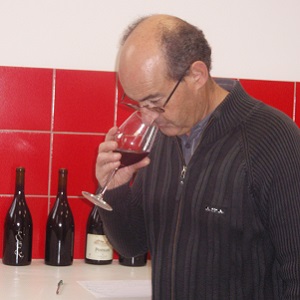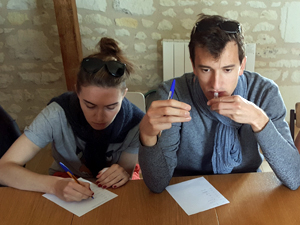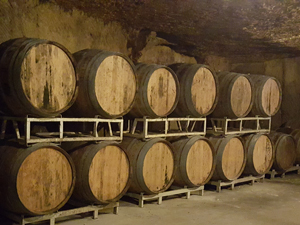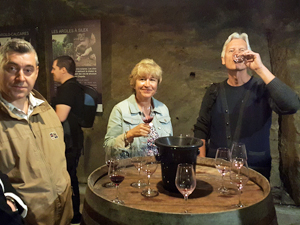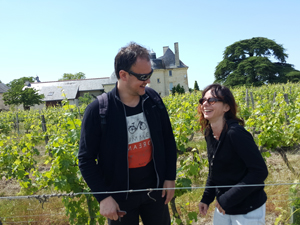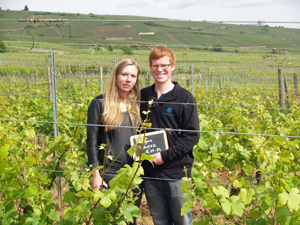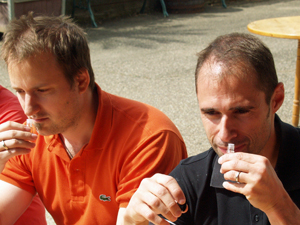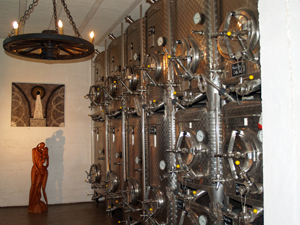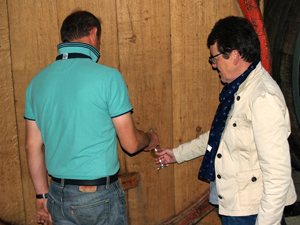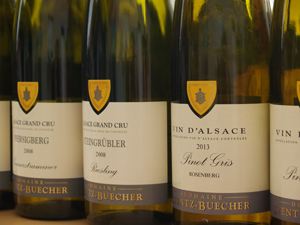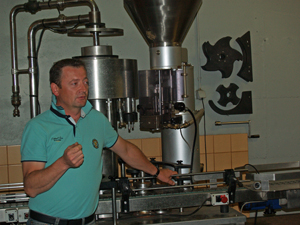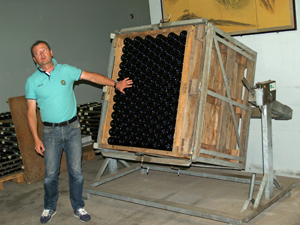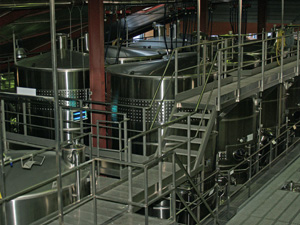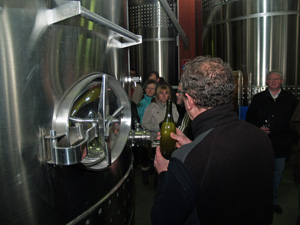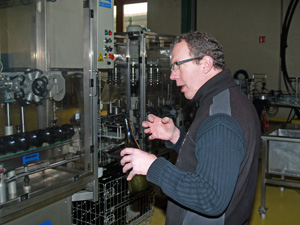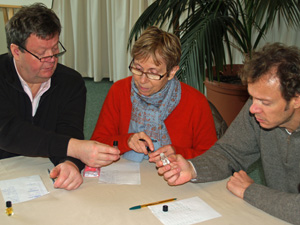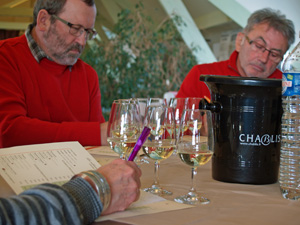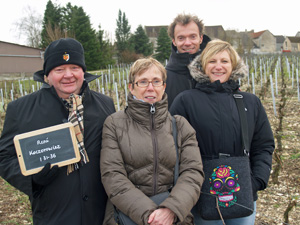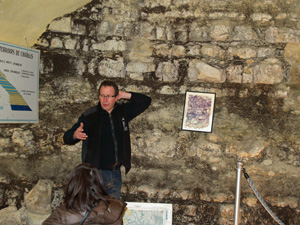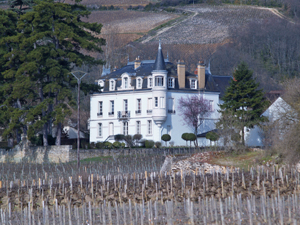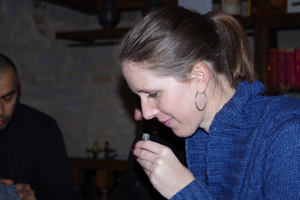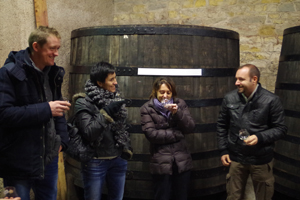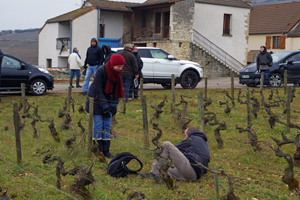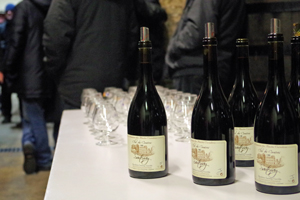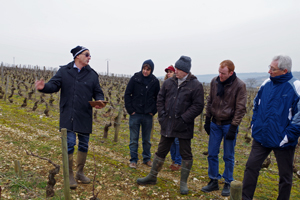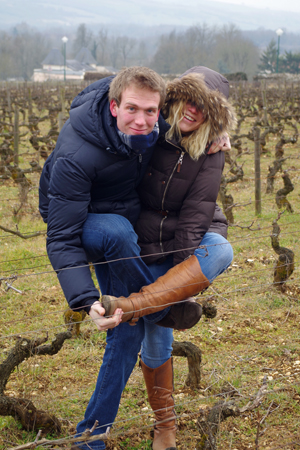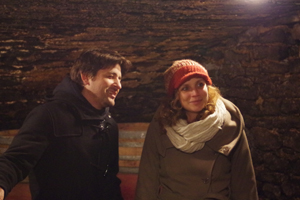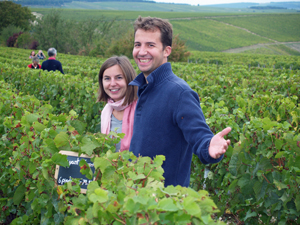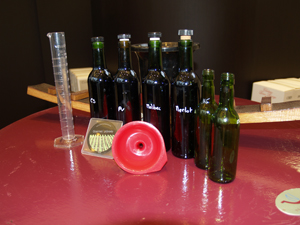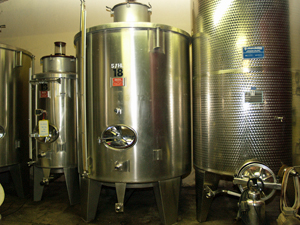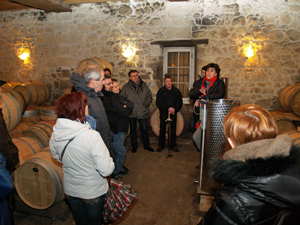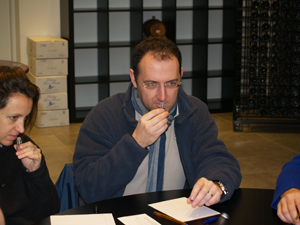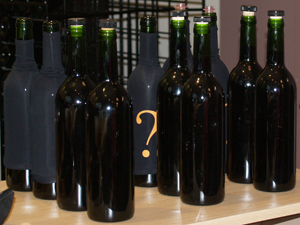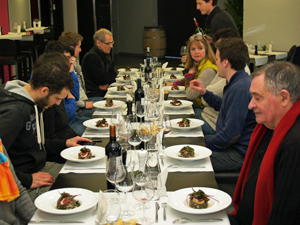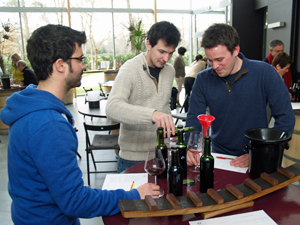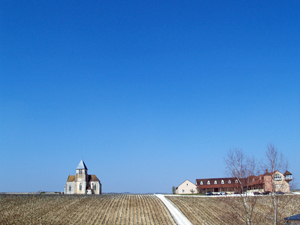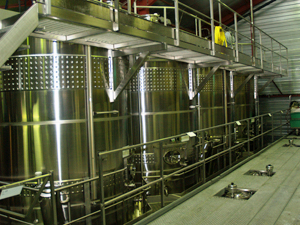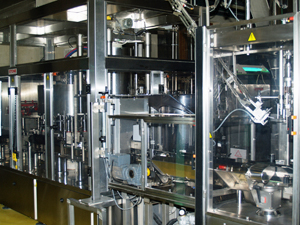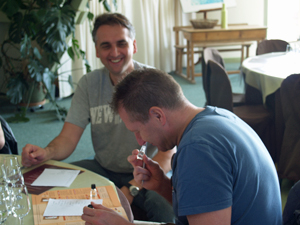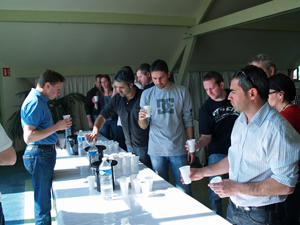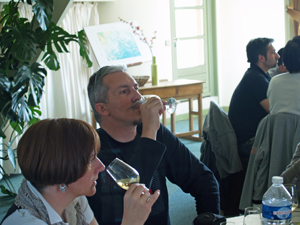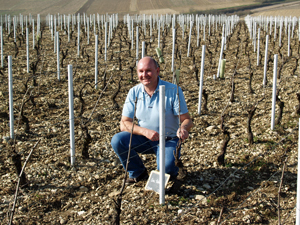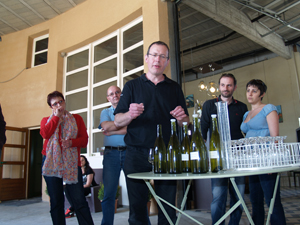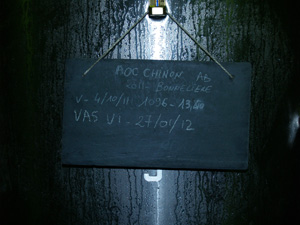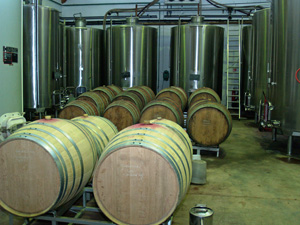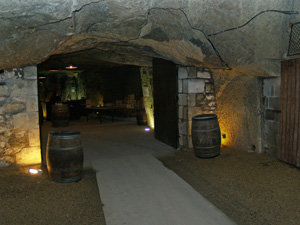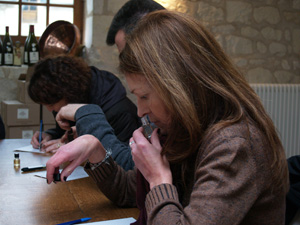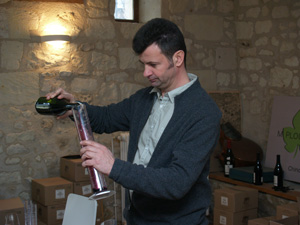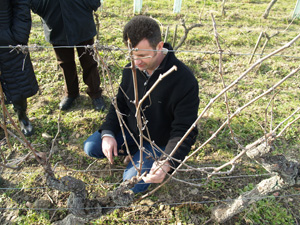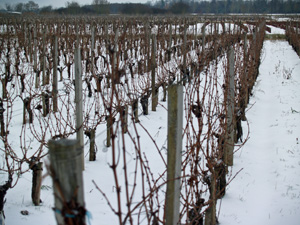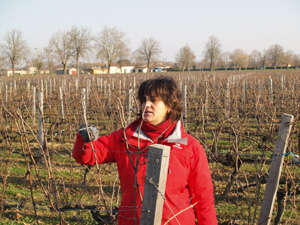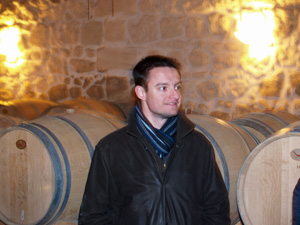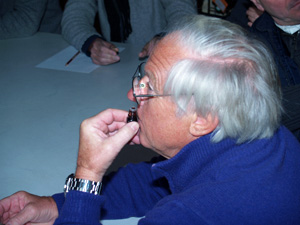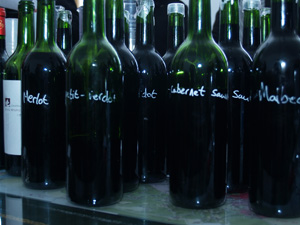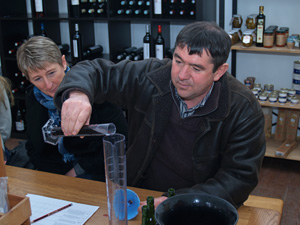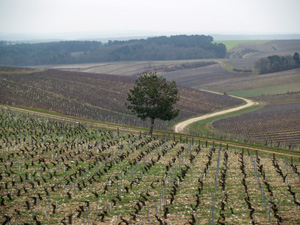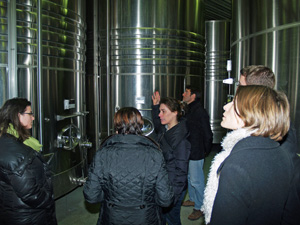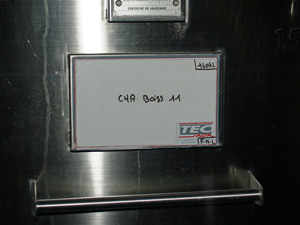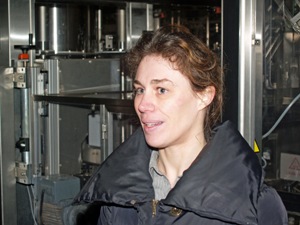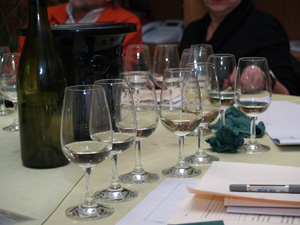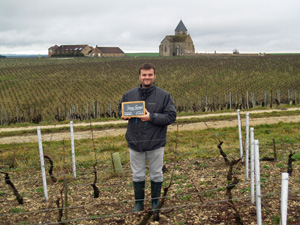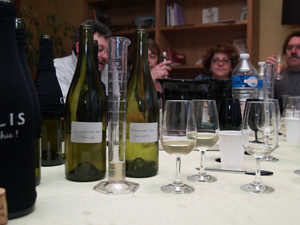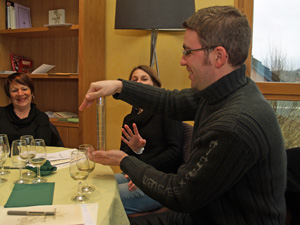Last weekend we were in Chablis to learn all about how the grapes that we harvested last autumn have been transformed into wine. This wine-making experience day spent at Domaine Jean-Marc Brocard enabled us to get behind the scenes to visit the fermentation halls and follow the process right up to bottling.
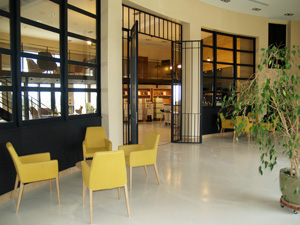
We started the day by following the journey that the harvested grapes take, and saw where they are weighed before being emptied into the wine presses. Raphaël explained how the presses work to separate the juice from the skins and pips.
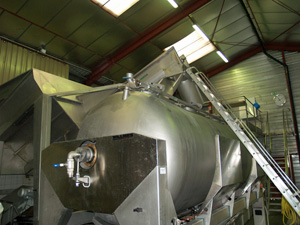
The juice is then held in a vat to allow the sediment to fall to the bottom, before the clearer juice is then drawn off and put into another vat. Here the sugar in the wine will be transformed into alcohol during the fermentation process. We learnt that the fermentation is closely monitored, and that the temperature is regulated to ensure that the fermentation gets started but doesn’t happen too quickly. We covered a whole host of topics from yeast, to chaptalisation, and the adding of sulphites.
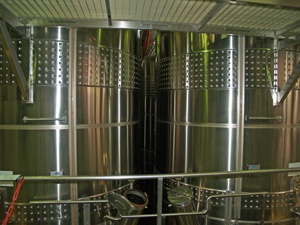
After the alcoholic fermentation, comes the malo-lactic fermentation, which decreases the acidity of the wine and makes it smoother. The malo-lactic fermentation has happened earlier than usual this year, and all of the vats had already finished, including the Chablis Sainte-Claire that the 2016 vintage clients will have at the end of the experience. We had brought some glasses with us, and Raphaël gave us a taste of the wine, directly from the vat. It was slightly cloudy, as it has not yet been filtered and although it shows promise, we all agreed that it needs time to age further before being ready for bottling!
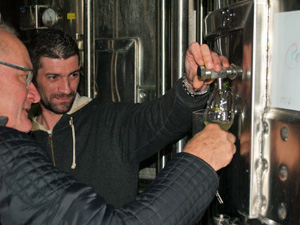
We then moved onto the area where the wine is bottled and the corks or screw tops are applied depending on the country that the wine will be consumed. Raphaël also showed us the machine that is used for labelling the bottles and where the bottles are boxed up before be sent to the four corners of the world.
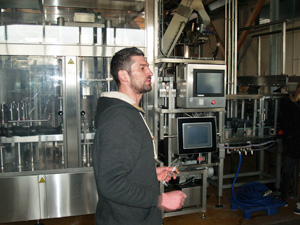
Back at the winery, we started to put our senses to the test to prepare us for the series of wine tasting to come. First of all we made our noses work by trying to name different aromas that can be found in white wine. We then had to identify different sweet, saline, acidic and bitter solutions, an exercise that also taught us that we have different captors in our mouths depending on the taste.
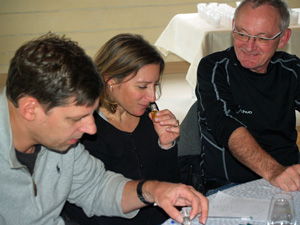
But enough of the theory. To better understand the differences between wines, there’s no better way than tasting them! We blind tasted three series of wines, which helped us to better appreciate the characteristics of different grape varietals, appellations, terroir and the way in which the wine is aged. We continued the wine tasting over lunch, which had been prepared by a local caterer.
In the afternoon, we started by descending into the cellar to see the geological dissection of the kimmeridgian soil. This enabled us to better understand the soil that gives the Chablis wines their distinctive minerality.
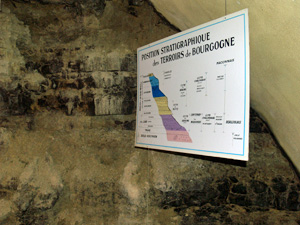
We then visited the hall where some of the premier cru and grand cru wines are aged in oak casks. Jean-Louis explained the role that the wood plays in developing the structure of the wine. We had one last tasting in store, that of the Montmains premier cru, directly from the oak cask.
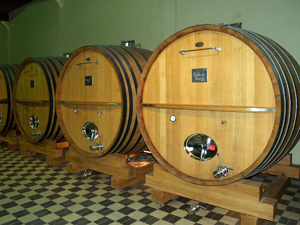
A few brave clients then headed out into the wind to visit their adopted vines, and take a few souvenir photos! A great way to end the day.
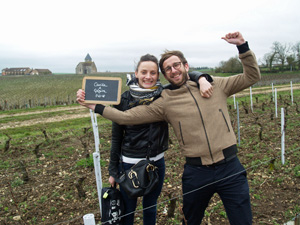
Many thanks to all you participated and made it such a fun day. We’ll keep you posted how your wine progresses over the coming months!



